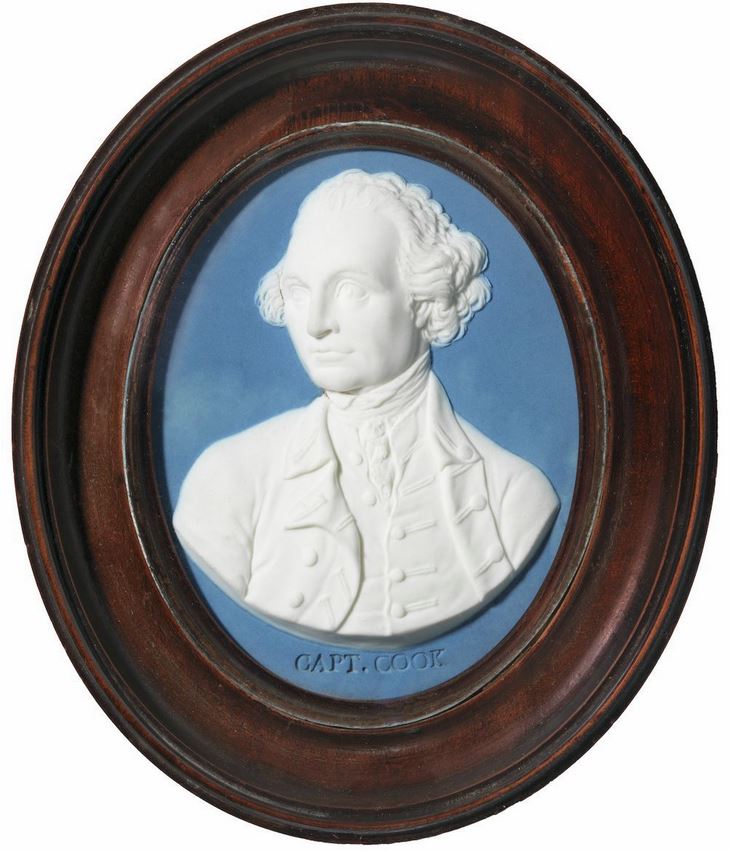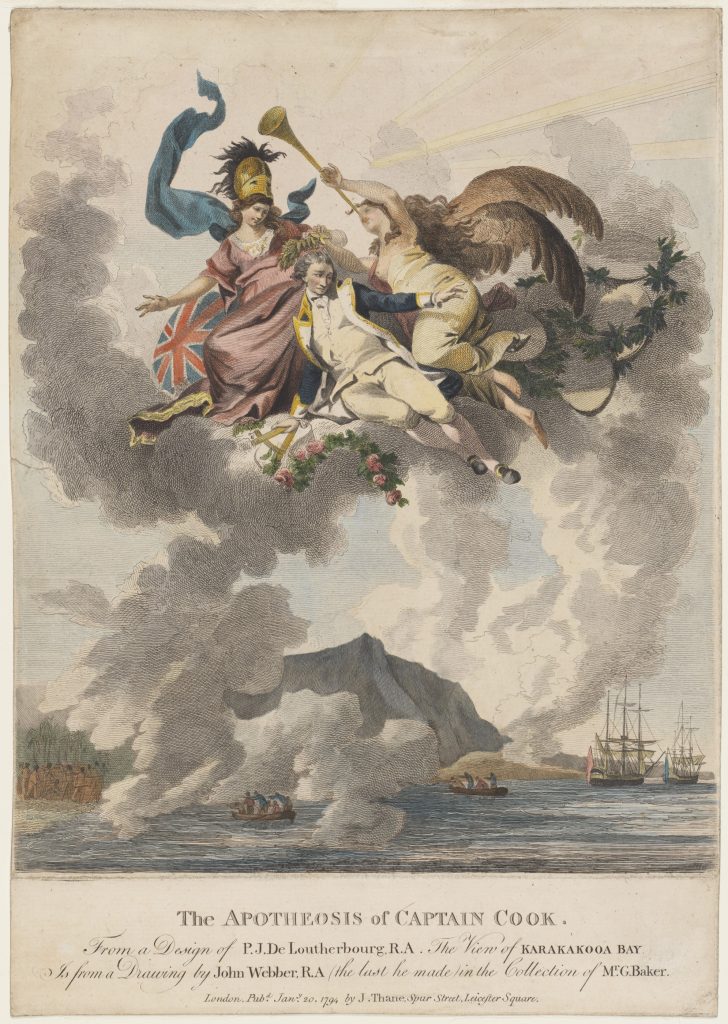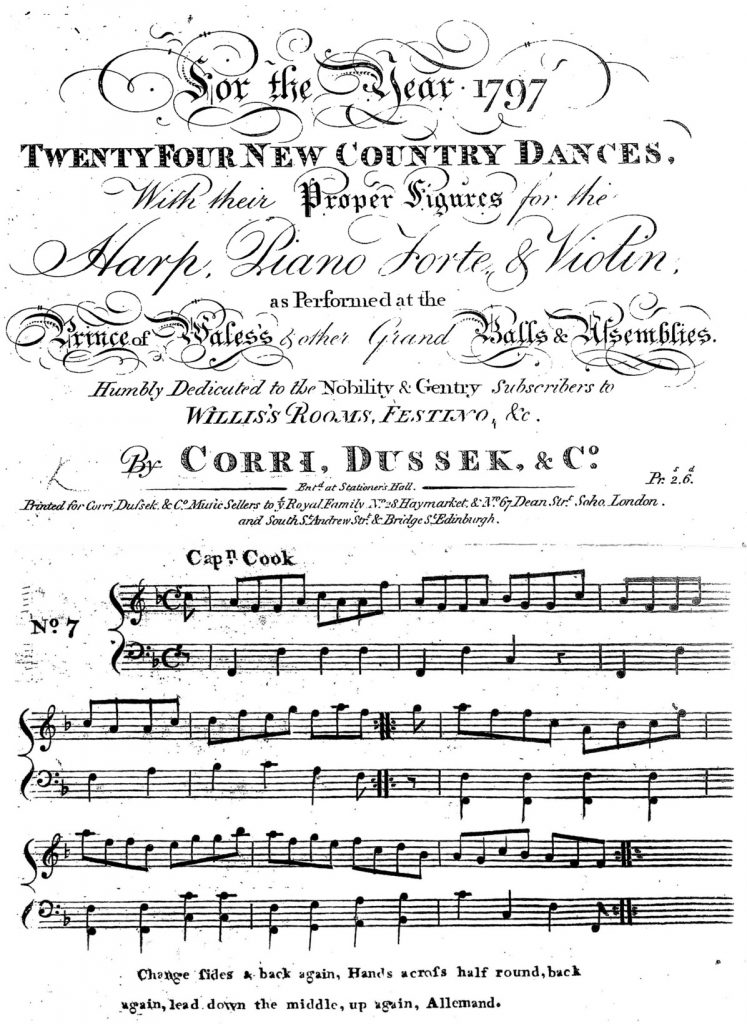Cook became a powerful symbol of the age of Enlightenment amid the exhilaration of discovering and learning about new parts of the world. 1
James Cook was famous in his lifetime, a brilliant explorer who navigated and charted vast unknown areas of the globe. He was modest man from the humblest of beginnings who became lauded as “the ablest and most renowned Navigator this or any other country hath produced2.” During the decades following his death, his fame increased and he was held in the highest esteem throughout Britain and Europe.
The official account of his first voyage, edited by John Hawkesworth, became one of the most successful works of the eighteenth century. The eagerly awaited journal of Cook’s second voyage, edited by Dr John Douglas, sold out within the hours of its release, and Kippis’ Life of Captain James Cook in 1788 further added to Cook’s reputation as a hero of the Enlightenment.
The mix of adventure, exploration and tragedy created a compelling story and accounts of his voyages were translated into half a dozen European languages. In France, King Louis XVI ordered a special edition of the voyages for the Dauphin, and Marie Antoinette chose The Travels of Captain Cook as one of the two books allowed her in the days before her execution3.
The site of his death became a place of pilgrimage, not just for British sailors, but for seamen of all nations. Cook’s accomplishments furthered the science of navigation, making seafaring a safer occupation, and his regime for caring for his crew improved the conditions, health and diet of seamen everywhere.

Catering to the idolisation of Cook and the eighteenth-century vogue for portraiture, Josiah Wedgewood produced three portrait medallions of Cook in 1777, 1779 (to coincide with the publication of the account of the tragic third voyage) and another in 1784.
National Portrait Gallery.4
Cook’s life was celebrated in the theatre with the spectacular pantomime Omai, or, a Trip Round the World [with Cook], and the remarkable The Grand Serious Pantomimic Ballet, The Death of Captain Cook. Europe produced its own ballets, operas, and plays to commemorate the famous navigator. All of these inspired the creation of new music and dance.
One expression of the enormous veneration accorded to Cook was the painting by Loutherbourg entitled The Apotheosis of Captain Cook. This appeared in the final scene of Omai, showing the great navigator being raised to immortality – into the arms of Britannia and Fame. As the painting descended onto the stage, “the cast, in the native costumes of all the places Cook visited from Alaska to New Zealand, sang:
He came, and he saw, not to conquer but to save;
The Caesar of Britain was he;
Who scorn’d the ambition of making a slave
While Britons themselves are so free.
Now the Genius of Britain forbids us to grieve,
Since Cook, ever honoured, immortal shall live.”5

The Apotheosis of Captain Cook by Webber and De Loutherbourg.
‘Apotheosis’ means to glorify/ to make divine – the elevation Cook to a godlike level.
State Library of New South Wales & Honolulu Academy of Arts, Honolulu, Hawaii’. 6
In 1797, a social dance in of honour Cook was published in 24 New Country Dances, with their proper figures for the harp, pianoforte & violin … Dedicated to the Nobility & Gentry by Corri, Dussek & Co. Both Corri and Dussek were noted composers of the time and produced a great quantity of sheet music in their small music shop in Haymarket, London.7 They composed instrumental and vocal music, as well as the scores for opera, thus the publication of a book of country dances was exceptional.
From our CD Captain Cook’s Country Dance.
Corri, Dussek & Co. Twenty-Four New Country Dances For The Year 1797.
London & Edinburgh.
Country dance: Duple minor longways.
| A1 | 1-2 | All cross right shoulder with partner. (½ gypsy and a sweeping turn single left). |
| 3-4 | All cross back, left shoulder with partner. (½ gypsy and a sweeping turn single right). | |
| A2 | 1-2 | Right hand star. |
| 3-4 | Left hand star. | |
| B1 | 1-2 | 1st couple lead down the middle. |
| B1 | 3 | 1st 1st couple lead back to the top, dancing. |
| B1 | 4 | 1st 1st1st couple cast to 2nd place WHILE 2nd couple meet and lead up. |
| B2 | 1-4 | All allemande right. |
References
1 Mellor, D. (2006). Cook, his mission and Indigenous Australia: a perspective on consequence. Paper presented at the Cook’s Pacific Encounters symposium, National Library of Australia. https://www.nma.gov.au/audio/captain-james-cook-series/transcripts/cook-his-mission-and-indigenous-australia
2 Cook, J., King, J., Douglas, J., Cadell, T., Nicol, G., & Hughs, M. (1785). A voyage to the Pacific Ocean : undertaken by the command of His Majesty, for making discoveries in the northern hemisphere : performed under the direction of Captains Cook, Clerke, and Gore, in His Majesty’s ships the Resolution and Discovery ; in the years 1776, 1777, 1778, 1779 and 1780 : in three volumes. London: Printed by M. Hughs, for G. Nicol and T. Cadell,
3 Williams, G. (2008). The death of Captain Cook: a hero made and unmade (Vol. 7): Harvard University Press.
4 Wedgwood and Bentlley (1779). Jasperware medallion of Captain James Cook..National Portrait Gallery. https://www.portrait.gov.au/portraits/2007.27/jasperware-medallion-of-captain-james-cook
5 Hetherington, M., & Morphy, H. (2009). Discovering Cook’s Collections. Canberra, A.C.T: National Museum of Australia.
6 Webber, John, & De Loutherbourg, P. J. (1794). The Apotheosis of Captain Cook, 1794 / Drawn by John Webber, Design by P. J. De Loutherbourg. https://search.sl.nsw.gov.au/permalink/f/1cvjue2/ADLIB110340750
7 Kidson, F. (1900). British music publishers, printers and engravers. [Place of publication not identified]:Hill.
8 Corri, Dussek, & Co. (1797). Twenty Four New Country Dances, with their Proper Figures for the Harp, Piano Forte & Violin … Dedicated to the Nobility & Gentry … For the Year 1797. London ; Edinburgh: Corri, Dussek & Co. © The British Library Board, b.54.(3), title page and page 7.
______________________________________________________________
This resource was created on the lands of the Gubbi Gubbi people.
We pay our respects to their elders past and present.
Sovereignty was never ceded.
______________________________________________________________
Header credits:
1. Portrait of Captain Cook by Nathaniel Dance-Holland [Public domain]
2. A jig on board by Cruikshank. Courtesy of The Lewis Walpole Library, Yale University
3. View of the South Seas by John Cleveley the Younger [Public domain]
______________________________________________________________
The information on this website www.historicaldance.au may be copied for personal use only, and must be acknowledged as from this website. It may not be reproduced for publication without prior permission from Dr Heather Blasdale Clarke.



